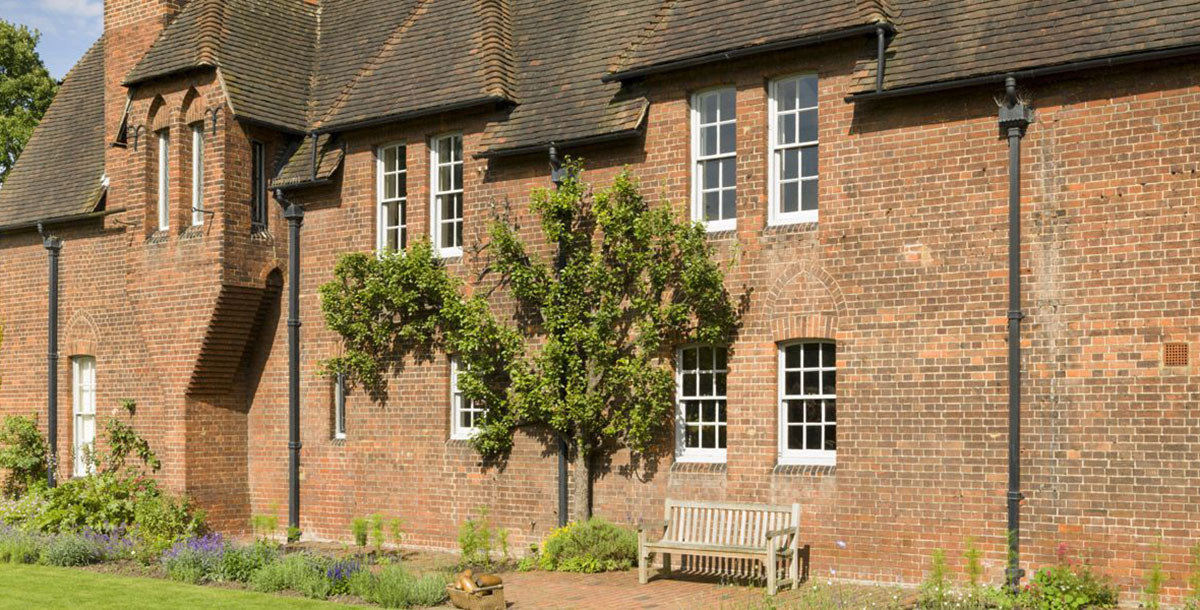Kevin McCloud on the connection between buildings and place
Our editor-at-large ponders the relationship between buildings and site, and how it affects our love of them.
There’s a paradox in our built world that nothing is truly new. The moment you open the packaging on your iSlab, it starts to get knocked about. Some of us panic at the idea that our new toys might have been manufactured six months ago; that’s ancient history in computer upgrades.
Meanwhile, buildings are right at the back of the grid. They’re slow to design and build, and the moment they’re finished, they start to erode and mark. They have to sit outdoors in the rain, suffering the humiliations of the weather. By the time they’re a week old, they’re already no longer new.
William Morris, the designer and founder of the Society for the Protection of Ancient Buildings, wrote in the society’s manifesto in 1877: ‘As good buildings age, the bond with their sites strengthens. A beautiful, interesting or simply ancient building still belongs where it stands, however corrupted that place may have become. Use and adaptation of buildings leave their marks and these, in time, we also see as aspects of the building’s integrity.’
For Morris, the accumulated marks of time, use and place, of decay and weathering, strengthen the story of a place. Whereas a 21st-century designer might find the degradation of their work abhorrent, Morris celebrated the way in which all human creativity is more or less Ozymandian.
We take a piece of cliff, we cut, carve and polish it into the most valuable object, we site it and then we watch as the universe claims it once more and weathers it slowly back to powder.
Steel returns to iron ore grit, concrete eventually splinters back to dust and my 1986 IBM computer that was once pale grey is determinedly assuming the sticky yellow hue that all plastics adopt as they age. Pretty soon it will dissolve into its own pool of crude oil.
The connection between buildings and place is a precious one; a relationship that objects, such as cars or computers, can’t easily share.
Architecture, gardens, streets and our public realm are, however, bound and woven into the landscape in which we see, more or less transparently and more or less successfully, a relationship between a context and what mankind has made there.
The context itself might even be man-made, (such as a historic setting for a new building). We generally respond better to made things when they have this kind of connection, and this perception can be enriching.

Photo: Nigel Rigden
It can bring a genuine feel-good value to life, a sense of well-being that comes with understanding an order and our place within it, whether the order is historical and temporal or geographical and cultural. It happens with places but doesn’t, I think, very often happen with ‘stuff’.
That’s not to say that stuff isn’t meaningful to us. Stuff can light the imagination and inspire the spirit. We still enjoy the made-up story of objects and their glamour.
Baubles and trinkets seduce adults as much as children; craftsmanship, which imbues objects with lasting attractiveness and deeper value, can occur in the most unlikely of things, from a handmade suit to a spoon.
But if we want truly authentic relationships with what we make, I say ditch the tablet and reach out to a venerable building. Because the relationships between place, architecture, design and people are powerful and resonate profoundly within us.
Let’s suppose that a historic building has a positive contribution to make to our world. That a beautiful old pub, 18th-century town hall or wonky corn exchange cheers us up when we see one.
It might be a step too far for us to agree with Morris that a true understanding of history is the key to happiness, but I believe that the layering and the complexity of our built environment, including its most ancient and prized assets as well as its newest, can provide all the depth, interest and relief we need – like a flavoursome layer cake of reference.
We demand complexity in our visual world that can never be fully provided by a shiny high-resolution screen on our laps. I opt for decay and weathering every time.
Lead Image: National Trust









